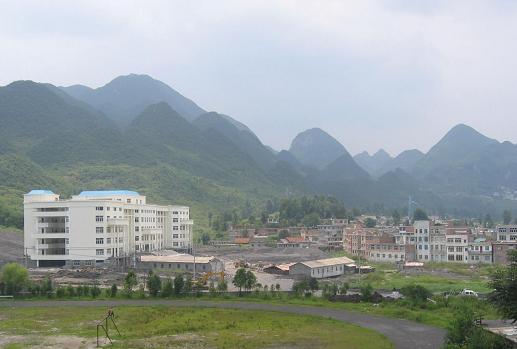|
Liupanshui
(or Chuchow) is an amalgamation of several towns and rural
areas. Three major towns Liuzhi, Shuicheng and Panxian formed this
region. This area is nicknamed a "sea of coal in China" and it is the
most important mining areas of Guizhou.
It is also the gateway to Weining, and Caohai Lake, which is a
paradise of various kinds of birds, including the well known
black-necked crane. Sprawling over an area of 20 sq.km, Weining Caohai
is the highest plateau lake in Guizhou.
With luxuriant water weeds, it is well known for sightseeing
black-necked cranes. It is a national natural reserve with a 20 sq.km.
freshwater wetland. The lake is regarded as a wetland because of its
permanent 2 meter avarage depth. Grasses cover about 70% of the lake's
surface, giving rise to the name Caohai(Grass sea).
|
Liupanshui
city is located in western Guizhou Province. The city lies in an
important coal mining area; other main economic activities are the
production of electric power, iron and steel, chemicals, and building
materials. Crops grown in Liupanshui include corn; rice; wheat;
tobacco; and rapeseed, which is used to make lubricant and cooking
oil. The Guizhou-Kunming rail line passes through Liupanshui. The city
is a conglomeration of several towns over a large area. Although the
area is administered as a city, it has a dispersed and multicentered
settlement pattern. The city’s name derives from the first syllables
of the three largest towns: Liuzhi, Panxian, and Shuicheng. Liupanshui
is also culturally diverse, with one quarter of its population
belonging to minority nationalities such as the Yi and the Miao.
Population (2000)
2,023,000. |
 |
43 km
away from Liuzhi city, Suoga Ecology Museum is the first of its kind
in China. It lies in a commune district embaced by mountain. More than
4,000 people are distributed in 12 villages. They preserve old simple
traditions, such as men plowing and woman weaving, style of unique
marriage, funurals, music, dance, and gorgeous embroidered and
elaborated wax-printed costumes.
Liupanshui is inhabited by 200000 Yi people, half of whom live in a
compact
community at Pugu near Panxian. Their major festival is the Torch
Festival, held on the 24th day of the sixth lunar month.
Entertainments include horse racing, bullfights, cockfighting and
dancing. When night falls, the young gather round bonfires with
torches in hand to sing and dance. Locals call this "Basking in
the moonlight".
The Buyi
Mid-July Festival takes place on the 15th day of the seventh lunar
month when the people worship their ancestors. They gather on the
banks of Dabanhe River to sing, to dance and to play the suona (a kind
of Chinese trumpet) and lusheng, and to enjoy a variety of traditional
games.
In the
northern area of Guizhou, there grows a natural mushroom named
Jizhongjun,which is very delicious and popular. The local people
produce a soybean sauce with a flavor of Jizhongjun mushroom, which is
very welcomed in this province. But so far no one can plant this
mushroom artificially like Zhusun mushrooms which are a cash crop.
|

